Questionable ballots continue despite transparency
Nothing gets fans riled up like a good voting controversy. Hall of Fame voting is still a few weeks away, but awards season is always good for some backlash. As an unpaid (and unread) blogger, I don’t get a vote in any of this. That makes it a bit more frustrating when I see some of the ballots turned in by people who are paid actual real money to cover this sport. Unlike Hall of Fame voting, which can include ballots from people who haven’t covered baseball in decades but instead put in their time long ago and then were fortunate enough to live very long lives, awards voting is handled by a select group of professionals who really should know better. The processes are further distinguished by the publishing of the full details of every awards ballot for maximum transparency while Hall of Fame voting is done in secret to allow the ignorant, prejudiced, and sanctimonious voters to remain hidden if they so choose. But even with full transparency, there’s always one who decides to be the guy who takes a stand for some selfish, uninformed, misguided, or just plain idiotic reason.
AL Rookie of the Year
BBWAA AL Rookie of the Year Results
This year’s Rookie of the Year races were down to two players in each league by the end of the season. On the AL side, Wil Myers was the clear favorite and took the award with 23 first place votes, 5 second place votes, and 1 third place vote. The third place vote from Cleveland Plain Dealer writer Dan Hayes is a bit suspect (especially considering that second place finisher Jose Iglesias wasn’t even on that ballot), but fellow Cleveland representative Chris Assenheimer of the Elyria Chronicle-Telegram went a step further and left both Iglesias and Myers off his ballot. Now, there are only three spots on the ballot, so we can assume that Myers and Iglesias would have still been in the top five, but it seems a bit odd for both Indians writers to be so down on the top two finishers. Only two other writers left Iglesias off their ballots (Joe Haakenson representing Los Angeles, who cast the lone second place vote for Angels rookie J.B. Shuck, and Gregg Wong representing Minnesota) and nobody except Assenheimer forgot Myers. Hayes and Assenheimer combined for the only first place votes by second and third runners up Chris Archer and Dan Straily, respectively. Archer and Straily each appeared on a fair number of other ballots, so their elevation to the top two spots on the Cleveland ballots isn’t too much of a stretch (and there’s a legitimate case for valuing starting pitchers over position players or the other way around). Assenheimer’s third place vote for Indians rookie Cody Allen over both Myers and Iglesias though is just shameful homerism. Allen pitched just over 70 innings with a 2.43 ERA, 88 strikeouts, 28 walks, and just 7 home runs for 1.4 bWAR. That’s a good showing for a middle reliever of any age, but is it better than position players who logged more time and by bWAR provided more value (2.0 for Myers and 1.9 for Iglesias)? Allen faced 301 batters, while Myers and Iglesias each had more than 370 plate appearances on top of their time in the field. All I can figure is that Cleveland overvalues relievers or just doesn’t like Myers and Iglesias. Somebody must have said something nasty about the place on Twitter I guess…
NL Rookie of the Year
BBWAA NL Rookie of the Year Results
Over in the NL, there was more of a consensus on the top two rookies. The Marlins made a bizarre gamble by rushing Jose Fernandez straight to the majors, skipping over both AA and AAA, in a season where they were only contending for not being the worst team in the majors (they finished with an NL-worst 100 losses, still ahead of the 111-loss Astros). While most teams were holding back their prospects to gain an extra year of control or delay arbitration eligibility, the Marlins were getting solid performances out of one of the best pitchers in baseball. Fernandez finished with just over 172 IP, an ERA of 2.19, 187 strikeouts, and a ton of really good numbers that put him in contention for the Cy Young. His 6.3 bWAR was more than the bWAR of the top three AL RoY finishers combined. All on a team that won just 62 games. Seems like a waste, but I guess the gamble paid off, as much as anything pays off in Miami. Fernandez received 26 first place votes and 4 second place votes in a runaway Rookie of the Year victory.
And yet I’m sure there are more than a few people who feel that Jose Fernandez was not the best rookie in the NL this year. Enter Yasiel Puig, the Cuban sensation that made everyone forget how much the Dodgers still owe to Matt Kemp, Andre Ethier, and Carl Crawford. Puig’s high-energy style of play sometimes rubbed both opponents and teammates the wrong way, but the young outfielder provided enough offense to give hope that he’ll mature into a legitimate superstar. In just 104 games, Puig accumulated 5.0 bWAR with an OPS of .925 (.319/.391/.534, 19 HR, 11 SB, 160 OPS+, etc.). It’s clear that Fernandez and Puig were the top rookie pitcher and hitter, respectively, in all of baseball this year. Fernandez deserved the award, but Puig wouldn’t have been a bad choice either. He got the other 4 first place votes and the other 25 second place votes. Wait, 25? What happened to the other one?
That brings us to John Maffei of the San Diego Union-Tribune. His ballot has Jose Fernandez first, Cardinals pitcher Shelby Miller second, and Padres infielder Jedd Gyorko in third. Miller, along with Hyun-jin Ryu and Julio Teheran, was in the second tier of 2013 rookie pitchers. Predictably, Miller, Ryu, and Teheran split the majority of the third place votes. Second is a bit high, but it’s not too unreasonable if you value starting pitching over hitting. Jedd Gyorko had a great rookie season and certainly deserves some recognition (his 2.2 bWAR beats AL RoY Wil Myers, though Gyorko did have 40% more plate appearances), so a third place vote behind Fernandez and Puig can be seen as a symbolic gesture. But a third place vote over Puig? Puig had more hits, more triples, more stolen bases, more walks, and fewer strikeouts than Gyorko in almost 100 fewer plate appearances. Gyorko topped Puig in doubles 26-21 and home runs 23-19 (though their home runs per plate appearance was roughly identical). And the triple slash of .319/.391/.534 for Puig vs. .249/.301/.444 for Gyorko is just humiliating. Gyorko had a good start while Puig had a great season. So why did a San Diego writer pick a San Diego player over a Los Angeles phenom? I’ll leave that as an exercise for the reader.
AL Cy Young
For a race that was essentially a toss-up between a bunch of equally deserving pitchers, the outcome was about as decisive as they come. Max Scherzer’s 21 wins seemed to be the tiebreaker that got him 28 of the 30 first place votes for AL Cy Young, with the remaining ballots listing him second and third. So many pitchers had a good case that you really can’t fault anyone for their choices. Sale over Scherzer? Sale had the edge in bWAR, 6.9 to 6.7. Darvish over Sale? 277 strikeouts to 226. Colon over Darvish? 3 shutouts and 2.65 ERA to Darvish’s 0 and 2.83. Even though both LA writers had unique views of the AL Cy Young race, I can’t really hold it against them. J.P. Hoornstra of the Los Angeles News Group had Sale first followed by Darvish and Scherzer, while Sporting News writer Anthony Witrado was the only one to leave Darvish out of the top five. Move along, nothing to see here…
NL Cy Young
How about that Clayton Kershaw? Only a Dickey away from three straight Cy Young Awards, Kershaw has emerged as one of the game’s elite at the age of 25. Matt Harvey may have gotten the All-Star Game start, but Kershaw took home his second Cy Young with a nearly-unanimous 29 first place votes. The 30th one went to Adam Wainwright, who had a pretty good season himself (as 15 Kershaw voters acknowledged with their second place votes). Rookie Jose Fernandez finished third and Matt Harvey and Craig Kimbrel answered the eternal question of “Elite closer or ace starter whose season ended early due to injury?” with a tie for fourth place. With five spots on the ballot, it’s actually a bit surprising how few ballots each of the four runners up appeared on. Wainwright was the only one of the bunch with a first place vote, but he didn’t even place in the top five on four ballots. Fernandez was left off six ballots, while Kimbrel and Harvey combined for a mere 33 votes. Of the next five, Cliff Lee was second to Kershaw in bWAR with 7.3, Jordan Zimmermann led the NL in meaningless Wins with 19, Zack Greinke was, um, fourth in ERA behind Kershaw, Fernandez, and Harvey, Madison Bumgarner was next on that list, and Francisco Liriano was also a pitcher in 2013.
What the hell, NL Cy Young voters? CSN Bay Area writer Ray Ratto had Bumgarner 5th and left out Wainwright. Seriously? Bumgarner’s other vote was a fourth place vote from CSN Bay Area writer Andrew Baggarly, who had Jose Fernandez fifth and Harvey off the ballot. Sure, Bumgarner had a great season, but better than Wainwright, Fernandez, and/or Harvey? bWAR says no (3.8 vs. 6.2, 6.3, and 5.2, respectively), ERA is a stretch (2.77 vs. 2.94, 2.19, and 2.27, respectively), strikeouts maybe (199 vs. 219, 187, and 191, respectively), and ERA+ no way in hell (120 vs. 123, 176, and 157, respectively). I get that you want to put your guy on the ballot somewhere, but maybe you could be a little more tactful.
Francisco Liriano is an even more baffling choice. Interestingly, none of his two votes came from Pittsburgh writers but instead came from the teams to the east and the west. Liriano had about the same season as rookies Shelby Miller, Hyun-Jin Ryu, and Julio Teheran. He wasn’t among the leaders in just about anything and his 161 IP isn’t exactly anything to write home about unless you’re a rookie or a releiver (though even the three rookies pitched more). He’s not a top 10 NL pitcher in 2013, much less top 5. Yet At Large writer Hal McCoy ranked Liriano fourth behind just Kershaw, Wainwright, and Zimmermann and Kevin P. Cooney of the Bucks County Courier Times had him fifth. Obviously, Liriano’s choice over some of the other starters isn’t because they didn’t pitch enough innings. Neither voter had a hometown pitcher on their ballot, though Cliff Lee would have been a better choice. So what’s going on here? Damned if I know, some guys just really like average starting pitchers, I guess.
AL MVP
Unlike the previous awards, the interpretation of “value” in the Most Valuable Player award varies from person to person. Some vote for the best player, others factor contributions to getting their team to the postseason. With no clear way to evaluate worthiness and 10 spots on the ballot, this won’t be easy to sort out. Complicating matters further is a Miguel Cabrera vs. Mike Trout matchup for the second year in a row. Trout is the leader in WAR (bWAR or fWAR, take your pick), but the Angels were never really in contention. Cabrera led in all three triple slash categories and was second behind Chris Davis in Home Runs and RBI for a Tigers team that made it to the ALCS. If you like WAR, Trout is your guy. If you like the old school stats, Cabrera is your MVP. If you think a player’s contribution to making the postseason is most important, your pick is Josh Donaldson. Wait, Josh Donaldson? Unlike Trout’s Angels, Donaldson’s Athletics won their division (and finished 18 games up on the Angels). And unlike Cabrera’s Tigers, which had a superstar pitching rotation headlined by Cy Young winner Max Scherzer, Anibal Sanchez, Justin Verlander, and Doug Fister, Donaldson had Coco Crisp and Bartolo Colon backing him up. That makes Donaldson’s contribution to his team’s playoff run much more valuable than Cabrera’s. Any way you slice it, the AL MVP is Trout, Cabrera, Donaldson, or maybe Davis. And that’s exactly where all of the first place votes went.
But we need something to nitpick, so how about Trout’s 7th place vote from Worcester Telegram & Gazette writer Bill Ballou? (Full disclosure: I was a Telegram & Gazette subscriber for a year or so back when subscribing to newspapers was a thing people did.) Ballou’s ballot was also the only one with Davis in the top spot, which really only makes sense if you like home runs and RBI over everything else. Also interesting is that Trout is sandwiched between Boston players Dustin Pedroia and David Ortiz. I would wonder about hometown bias, but where’s Shane Victorino? Victorino was more deserving than Ortiz and was about on par with Pedroia, but he got only a single 10th place vote while the other two finished in the top 10 overall. I guess I just don’t see any logic at work here, let’s move on.
How about the lone Donaldson first place vote from Oakland Tribune writer John Hickey? Bias? Or is his ballot of Donaldson-Cabrera-Davis-Trout-Jones-Kipnis-Cano-Longoria-Crisp-Beltre just weighted by level of postseason contention. Wait, what’s Coco Crisp doing on there? Crisp was the second most valuable position player on the Athletics, but there are a good 20 or 30 players ahead of him in the overall AL. There you have it, our first clear-cut case of hometown bias with an 8th place vote. Not exactly earth-shattering.
I give up, let’s move on to the NL.
NL MVP
This one isn’t nearly as easy to call as the AL MVP race, so we’re probably wasting our time here. Andrew McCutchen took 28 first place votes and was in everyone’s top 3. After that though, 10 more players had votes in the top 5 spots and another 13 received votes. WAR isn’t going to help us; Carlos Gomez was first in bWAR and second to McCutchen in fWAR, but appeared in the top 6 on just one ballot (much of his value was from defense, which isn’t highly valued). Michael Cuddyer took the batting crown but received only three 10th place votes. Paul Goldschmidt led in OPS, home runs, and RBI, which was enough to make him the clear second place choice for half of the voters and anywhere from third to sixth for the rest. Third place finisher Yadier Molina was all over the map with votes from first to 10th, though he did appear on every ballot.
Wait a second, where’s David Wright? Wright racked up big numbers in just 112 games, finishing 2013 with 5.9 bWAR / 6.0 fWAR, which has to count for something, right? Not according to the voters, who went for players with lesser numbers in more games. If you don’t believe he’s valuable, try watching some of the Mets’ games without him.
So how exactly did Yadier Molina get a 10th place vote? That would be from Clark Spencer of the Miami Herald, whose ballot is largely unremarkable except for including Yasiel Puig, which isn’t entirely unreasonable (makes more sense than Coco Crisp). Molina’s first place votes are a bit more suspect, with both coming from the St. Louis Post-Dispatch. That alone isn’t too bad, but Rick Hummel’s second place vote for Matt Carpenter over McCutchen is pretty far out there. I can see Carpenter over Goldschmidt, but not McCutchen. Hummel’s ballot also included Allen Craig at 8th and Russell Martin at 10th, so I’m pretty sure this ballot came from a different year and/or universe.
Hawk Harrelson Award for Blatant Homerism
Most sportswriters and broadcasters are accused of bias of some sort (ESPN’s Buster Olney for instance has been accused of being biased for and against every team and geographic region in MLB), but few take as much pride in their bias as Chicago White Sox broadcaster Ken “Hawk” Harrelson. One of the last media personalities to embrace the idea of relentlessly rooting for the home team, Harrelson is a relic of a bygone era when only local fans would ever see and/or hear you calling a game. Actually, I don’t even know if it’s an era thing, because the opposite end of the spectrum is represented by the eternal Vin Scully. Whatever the reason, anyone who isn’t an obnoxiously outspoken White Sox fan probably can’t last more than five minutes into a Harrelson broadcast before reaching for the mute button or something to throw at the TV. It is in honor of the distinguished Hawk Harrelson that we present the first-ever award for blatant homerism to Rick Hummel of the St. Louis Post-Dispatch!
Voting went as follows:
| Writer, Affiliation | 1st | 2nd | 3rd | Points |
|---|---|---|---|---|
| Rick Hummel, St. Louis Post-Dispatch | 1 | 3 | ||
| Chris Assenheimer, Elyria Chronicle-Telegram | 1 | 2 | ||
| John Maffei, San Diego Union-Tribune | 1 | 1 |
Here are the individual ballots:
| Full Name | Affiliation | 1st | 2nd | 3rd |
|---|---|---|---|---|
| Matthew M. Lug | Collect the Mets | Hummel | Assenheimer | Maffei |
Pablo Sandoval Award for Most Homer City
If you’re from San Francisco, you may not realize that other teams have third basemen. That’s the only reason I can think of why Pablo Sandoval gets so many All-Star votes every year despite being nothing more than an average starter. It is in honor of the great city by the bay and its hot corner hero that we present the first-ever award for the most homer city to San Francisco!
Voting went as follows:
| City | 1st | 2nd | 3rd | Points |
|---|---|---|---|---|
| San Francisco | 1 | 3 | ||
| St. Louis | 1 | 2 | ||
| Cleveland | 1 | 1 |
Here are the individual ballots:
| Full Name | Affiliation | 1st | 2nd | 3rd |
|---|---|---|---|---|
| Matthew M. Lug | Collect the Mets | San Francisco | St. Louis | Cleveland |
Voter eligibility was limited to anyone who expressed an interest in participating, which was limited to me because I just made these things up. If you want in for next year’s awards, let me know and I’ll get back to you if I do this again next year. Or just make your own, whatever.
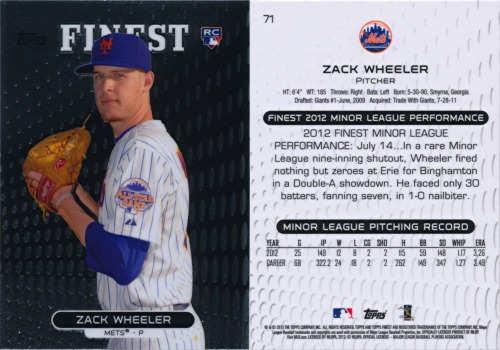
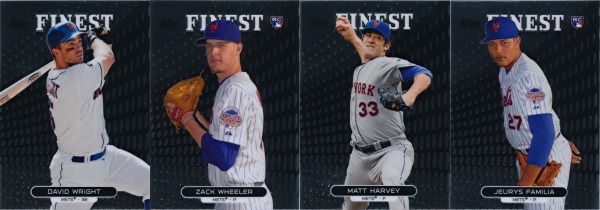
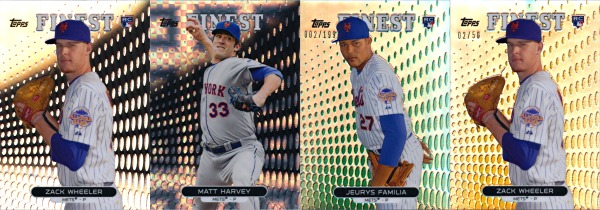
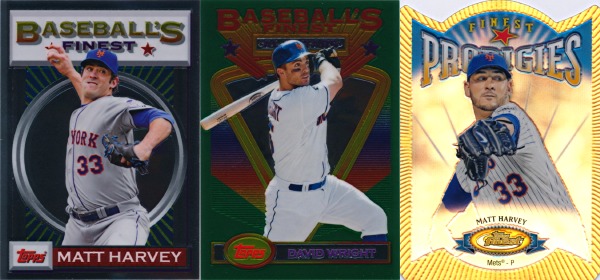
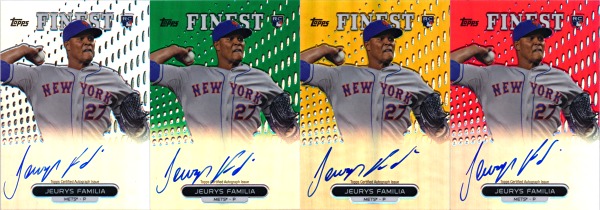
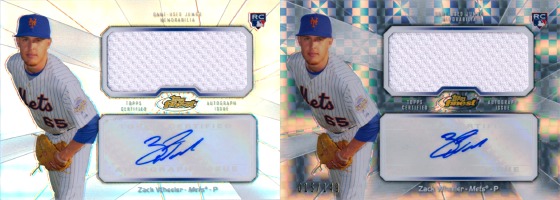
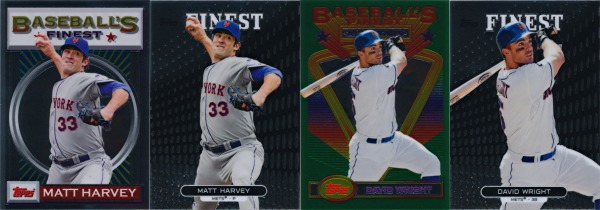
Recent Comments